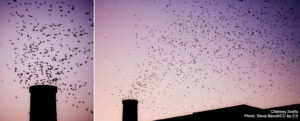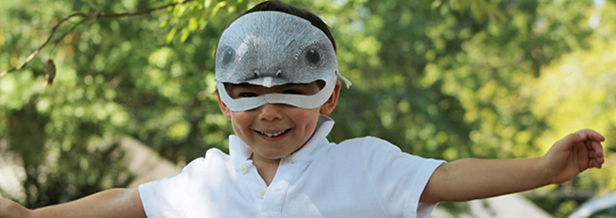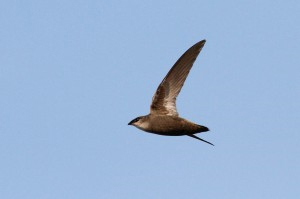Chimney Swifts
Swifts historically nested and roosted in hollow trees. As North America was colonized and the larger trees were cut down, swifts started to use chimneys. There are four swift species in North America; the most common east of the Mississippi River is the Chimney Swift. Swifts migrate to and from the Amazon basin in South America.
They arrive in North America in late March and start nesting. Only one pair nest in a chimney regardless of the size of the chimney. The young fledge about 30 days after hatching and begin flying all day immediately. Swifts eat 1/3 their body weight in insects every day (12,000 mosquitoes, termites, flies, and other insects each day). Once breeding season is over, they tend to flock together and gather in larger chimneys to roost. Staying in large groups helps them to maintain their body temperature during the fall. They typically have left our area migrating to South America by mid- October. Swift numbers have been declining almost 3% per year. Swifts are protected under the Migratory Bird Treaty Act of 1916.
Ways to help swifts
- Keep your chimney open or uncap your chimney if it is capped. Newer chimneys with metal liners are
too slick for swifts to use so they can be capped. Swifts prefer older chimneys with brick linings. - Be a Citizen Scientist – report nesting and roosting sites to your local Audubon chapter.
- Build a Chimney Swift tower to provide more nesting habitat for swifts.
- Save Roost Towers – Schools and industrial buildings are replacing older chimneys. Join us in
meeting with administrators and managers to influence plans before chimneys are removed. Contact
New Hope Bird Alliance if you know of a roosting tower that may have been removed or capped.
References: http://www.chimneyswifts.org
CHIMNEY SWIFTS IN DURHAM AND CHAPEL HILL

From mid-September to early-October, migrating Chimney Swifts move through central North Carolina on
their way to their wintering grounds in central South America. While en route, they spread out over the
countryside to feed during the daytime and then gather in large numbers for roosting at night. True to their
name, they roost communally in large numbers in smokestacks and chimneys. Local roosts in our area
may have thousands of swifts on any given night. For example, an estimated 8,500 swifts gathered in a
chimney on Trinity Avenue in Durham on September 23, 2020. If you would like to watch the spectacle of
thousands of swifts swirling through the air as they gather in the evening, here are some local observation
points:
Durham
- The roof at The Durham Hotel, 315 E. Chapel Hill St, Durham, is a terrific vantage point for several
downtown Durham chimneys. Access is first-come, first-served. The roof is wheelchair-accessible. Check the NHBA Calendar in September for group events. - The Accordion Club, 316 W Geer St, Durham. View is of the chimney on Trosa’s dormitory at North
and Geer Streets behind the Accordion Club. - Pearl Mill Flats, 807 W Trinity Ave, Durham. The best view is from the end of Minerva Avenue behind 600
N. Duke Street, behind the apartment complex. This is a very large tower which can be seen from a
number of locations.
Chapel Hill
- Franklin Street Post Office, 179 E. Franklin Street, Chapel Hill. The best view from the parking deck
behind the post office on E. Rosemary Street. The actual chimney is on the backside of the Post Office. - Porthole Alley between Ackland Art Museum and Top of the Hill off of South Columbia Street. There are several chimneys on the backs of buildings along the alley that are used by the swifts.

